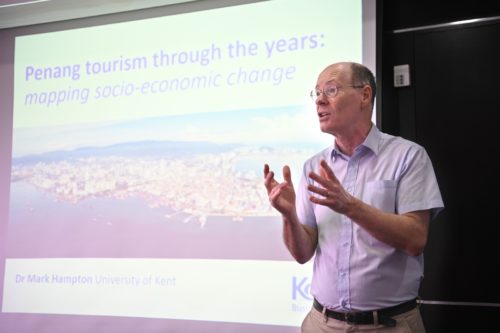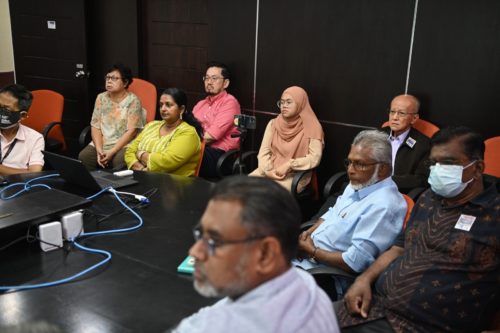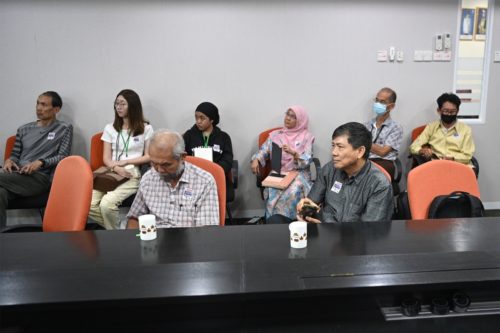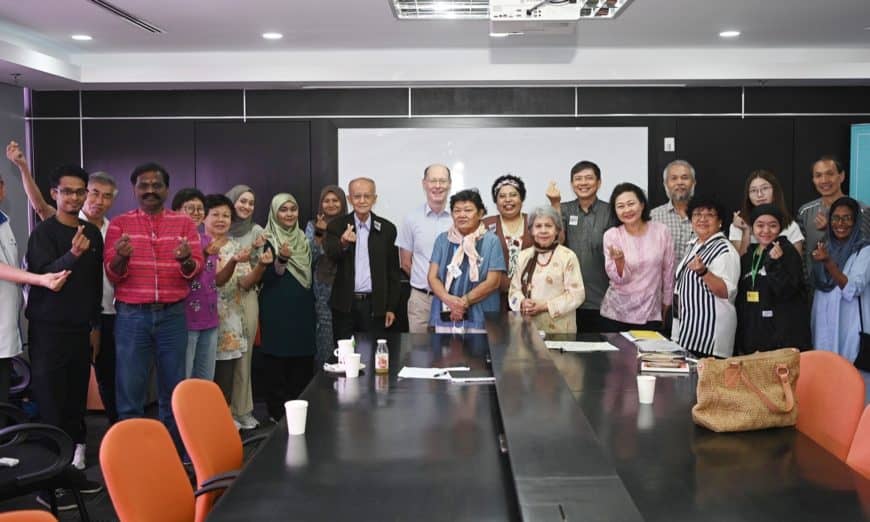PENANG is a ‘pearl of great price’.
There are many tourism assets and layers of complexity, says academician Dr Mark Hampton.
Dr Hampton, a Reader (Associate Professor) in Tourism Management at the University of Kent, England said Penang is unique as it has a (major) second sector – the (manufacturing) industry – besides just tourism.

“The state has all the industrial sectors just down the road from here where people from the tourism sector who lost their jobs, especially when the tourism industry collapsed, could still get some work.
“That is really unusual from all the other destinations I have looked at, which are recovering post-Covid-19. The people have some opportunities to earn some money for their families during tough times,” he commented about Penang during his public lecture, entitled, ‘Penang Tourism Through the Years: Mapping Socio-Economic Change’ at the Penang State Heritage Commission Office today. The public talk attracted some 30 participants.
On June 20, Dr Hampton also had a community workshop to discuss how tourism had evolved in Penang over the years.
He highlighted the need for the state to attract different segments of tourists.
“You need the top-end tourists, the backpackers, the eco-tourists, those travelling with families and others. You should not put all your eggs in one basket.
“Many countries see ‘quality’ or top-end tourists as targets and not just Malaysia. Indonesia is trying to get quality tourists, Thailand wants quality tourists, and Vietnam wants quality tourists.
“We must be very careful. These ‘quality’ tourists have many demands. They want top fittings in their luxury hotel rooms, they want everything to be tip-top and sometimes these items have to be imported. This would mean money leaking out of the country. And there is a limited number of the super-rich.
“It is important to look at tourist spending and what they spent on; and to reduce economic leakages out of the state and country. Having a large tourist number can be a problem because it leads to overcrowding, pollution, parking problems, and traffic congestion, among others.
“The key questions are where the tourists go, where they spend, and would the money stay in Penang.
“It is best if tourists in Penang stay longer, spend more, and the money stays in Penang. It is less helpful if the money does not stay in Penang,” he said.


Dr Hampton also expressed his concerns about the increasing cruise tourism in Penang, which in his view, has a poor return on investment (ROI) for destinations.
He recommended tourism-led inclusive growth as a guiding strategy which could benefit the local community and grow the state’s tourism sustainably.
Dr Hampton is internationally recognised for its research on tourism’s socio-economic impacts in developing countries, particularly small-scale and coastal/island tourism. He has given over 130 conference papers, often as keynote speaker; published over 60 journals/book chapters and written or edited four books.
He has a broad field experience in Southeast Asia for over 25 years, and his research has been funded by the World Bank; Commonwealth Secretariat; Swiss overseas aid; the Malaysia Ministry of Tourism; the British Academy; and the British Council. Dr Hampton is also a Fellow of the Royal Geographical Society (FRGS).
Dr Hampton said he first came to Penang in November 1989.
“I came as a backpacker and stayed in a small Chinese hotel in Chulia Street for about RM4 to RM5 per night. That was my first memory of Penang.
“I have a very good impression of Penang. I find Penang an interesting state with its culture and energy. I love the food.
“I have been back a couple of times for business for my university, and I have not been back for about 10 years. I came back in November 2022 to look at how tourism in Penang was recovering from the impact of Covid-19,” he added.
The public lecture also touched on the four phases of tourism in Penang – Phase One (the colonial period in the late 1950s); Phase Two (from the 1960s to the early 1970s); Phase Three (the parallel development period from the 1970s to 1980s); and Phase Four (the modern tourism period from the 1990s onwards).
Story by Christopher Tan and K.H. Ong
Pix by Siew Chia En

